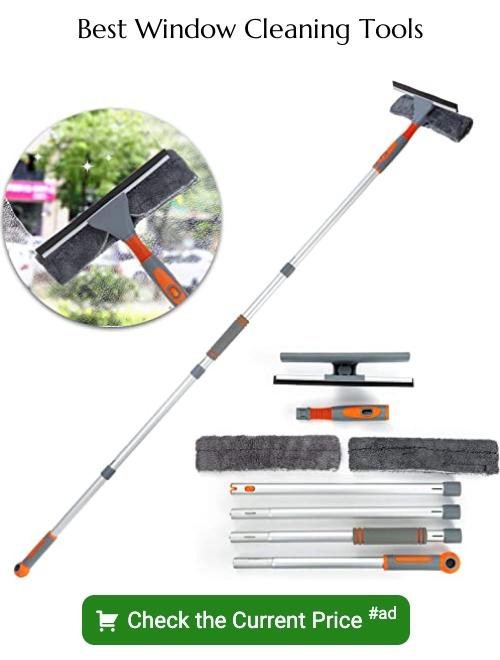Discover the essential factors to consider when determining the perfect pricing strategy for your window cleaning business, ensuring profitability and customer satisfaction.
When it comes to window cleaning, there’s a lot more to it than just wiping down the glass. As a professional in the industry, you know that there are many factors that go into determining how much to charge for your services.
From the size of the windows to the level of grime and dirt buildup, every job is unique and requires careful consideration. In this blog post, we’ll take a closer look at how to charge for window cleaning so that you can ensure that your pricing is fair and competitive while also making sure you’re earning what you deserve for your hard work.
So let’s dive in!
Key takeaways:
- Assess client needs: Size, obstacles, and service frequency.
- Choose pricing models: Hourly, per pane, or package deals.
- Calculate costs: Supplies, labor, transportation, insurance, and overhead.
- Set competitive rates: Research competitors, consider value proposition.
- Consider supply list: Tailor pricing based on window type and equipment needed.
Assessing Client Needs

Before you can determine how much to charge for your window cleaning services, it’s essential to assess the needs of each client. Every job is unique, and understanding what a particular customer requires will help you provide an accurate quote that reflects the time and effort required.
When assessing client needs, consider factors such as the size of their windows, whether they have screens or storm windows that need cleaning as well. Also take into account any obstacles like trees or landscaping around their property which may make accessing certain areas more difficult.
It’s also important to ask questions about service frequency – do they require weekly cleanings? Monthly? Quarterly? This information will help you determine pricing based on volume discounts if applicable.
Choosing Pricing Models
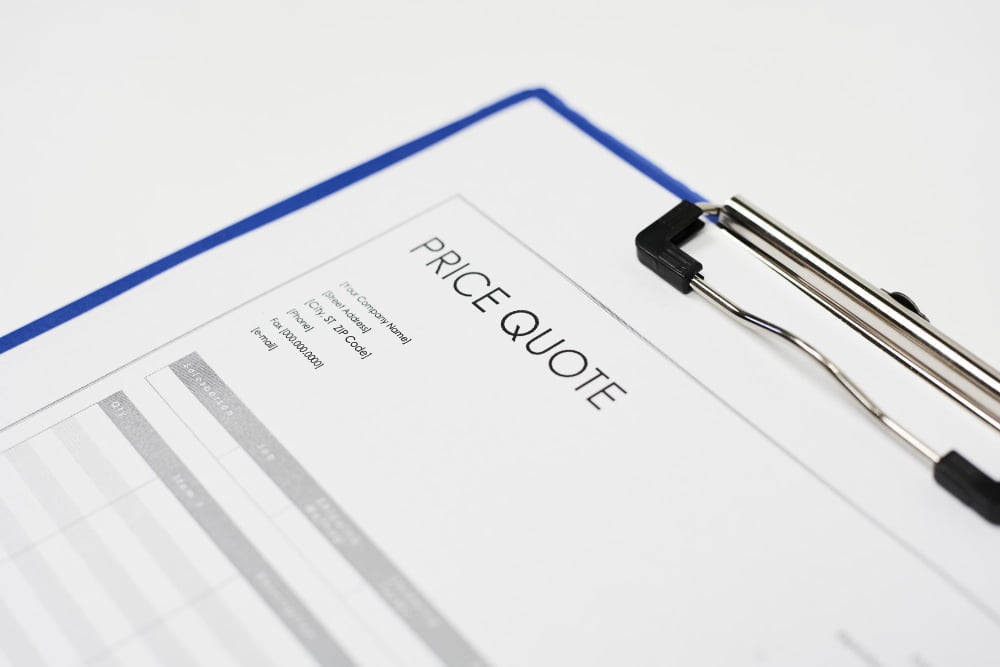
One of the most common models is charging by the hour, which can be beneficial if you’re just starting out and need to build up your client base. However, this method may not always be accurate since some jobs may take longer than others due to factors such as accessibility or level of dirt buildup.
Another option is charging per window pane or square footage. This approach allows for more accuracy in pricing and can help ensure that clients feel they are getting their money’s worth.
Offering package deals or discounts for regular service appointments can encourage repeat business while also providing an incentive for customers who might otherwise hesitate at higher prices.
Ultimately, choosing a pricing model will depend on various factors unique to your business and clientele needs.
Calculating Costs
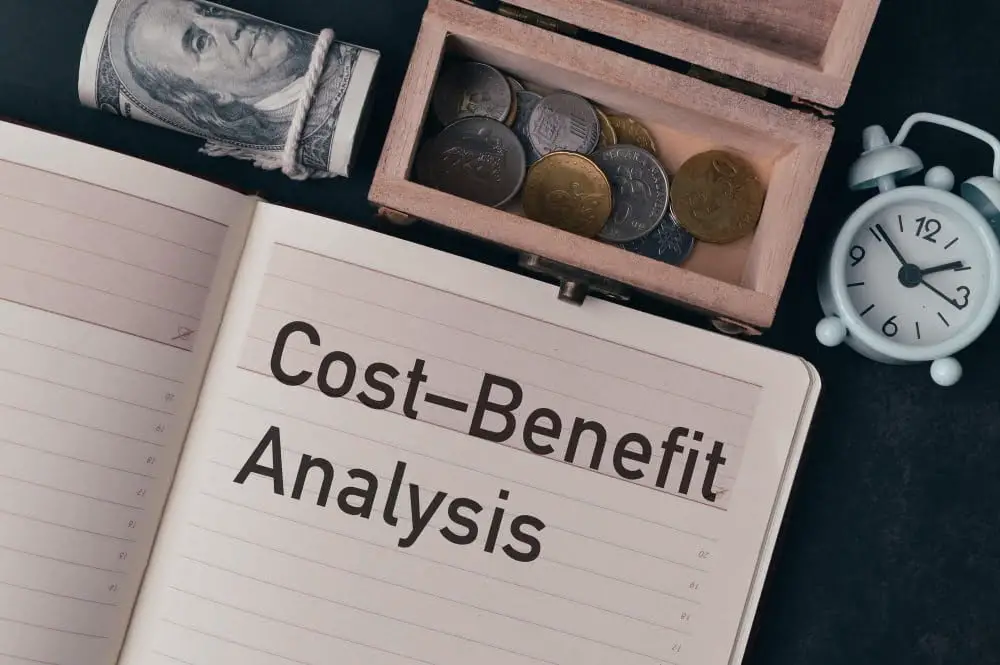
This includes not only the cost of supplies and equipment but also labor, transportation, insurance, and any other overhead expenses you may have. To calculate your costs accurately, start by making a list of all the supplies you’ll need for each job.
This might include things like squeegees, buckets, cleaning solution or soap mixtures.
Next up is labor – how long will it take you or your team members to complete each job? Be sure to factor in travel time as well as actual cleaning time when estimating this figure.
Transportation can be another significant expense if you’re traveling long distances between jobs or using a vehicle that requires frequent maintenance.
Insurance is essential too; make sure that both liability and worker’s compensation policies are in place before starting work on any project.
Setting Competitive Rates
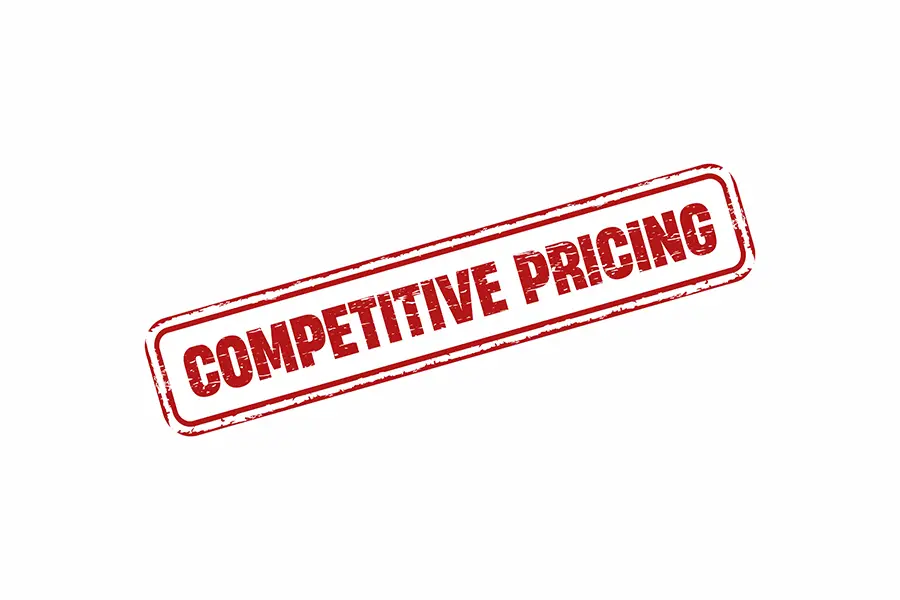
You want to make sure that you’re pricing your services in a way that’s fair and reasonable while also ensuring profitability. To do this, it’s essential first to research what other window cleaning businesses in your area are charging for similar services.
Once you have an idea of what the competition is charging, take some time to evaluate their pricing strategy and compare it with yours. Are they offering any additional or unique services? Do they have more experience than you? These are all important considerations when setting competitive rates.
It’s also crucial not only just looking at competitors’ prices but considering the value proposition of your business as well. What sets you apart from others in terms of quality, reliability, or customer service? Highlighting these strengths can help justify higher prices if necessary.
Consider Your Supply List

Your supply list will vary depending on the type and size of windows you’re cleaning, as well as any special equipment or products required for certain jobs. For example, if you’re working with high-rise buildings or large commercial properties, you may need specialized tools such as scaffolding or lifts.
It’s essential to take into account all necessary supplies when determining your pricing strategy so that you can ensure that your costs are covered while still making a profit. You’ll also want to make sure that any additional expenses related to travel time and transportation are factored in.
Types of Windows
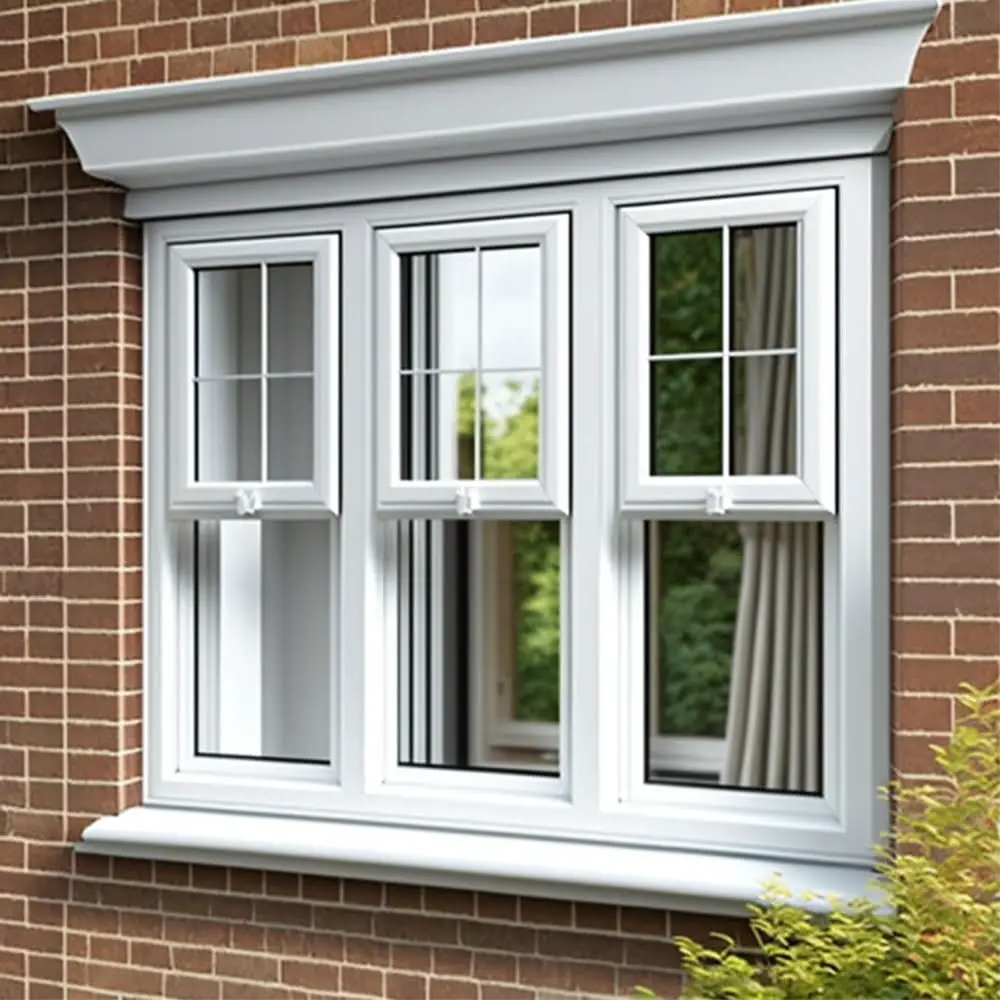
Different types of windows require different techniques and tools, which can affect the amount of time and effort required to clean them properly. For example, double-hung or single-hung windows are relatively easy to clean since they tilt inward for easy access.
On the other hand, casement or awning-style windows require more work as they open outward.
Another factor that affects pricing is whether or not there are any special features on the window such as grids or tinting. These features may add extra time and effort when cleaning them.
It’s important to consider these factors when determining how much to charge for your services so that you can provide accurate quotes while also ensuring profitability for your business.
Building Size and Accessibility
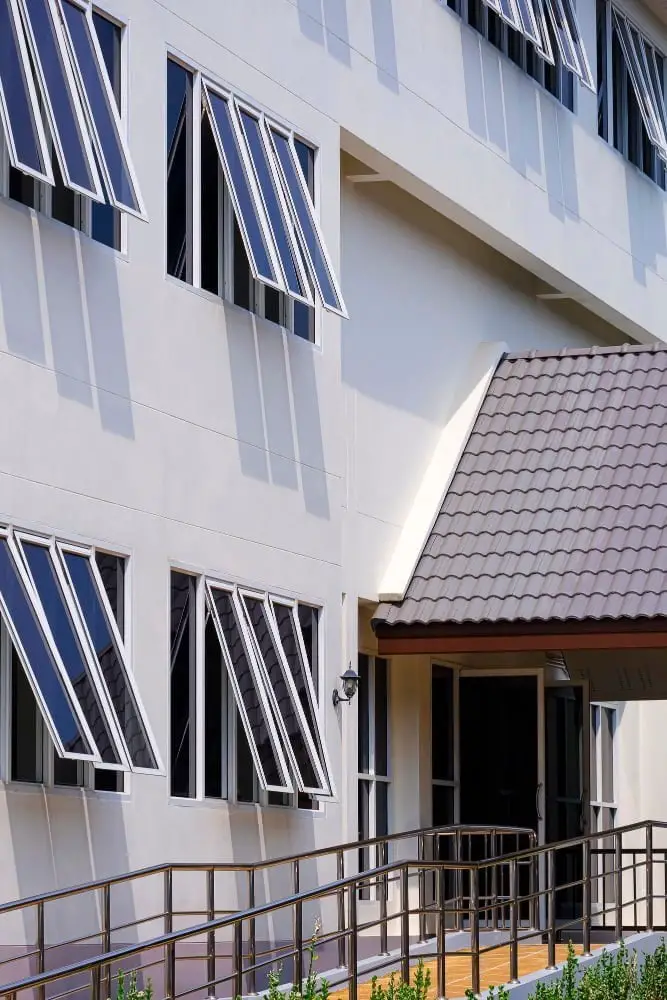
Larger buildings with more windows will naturally require more time and effort to clean, which means a higher price tag. The location of the building can also impact pricing – if your team needs special equipment or safety gear to access high-up windows or hard-to-reach areas, this will add additional costs.
It’s important to assess each job individually and determine how much extra work is required due to the size of the building or its accessibility challenges. This way you can provide an accurate quote that reflects both your time investment as well as any necessary equipment rentals.
Remember: while larger buildings may seem like a great opportunity for increased revenue potential, they also come with added expenses in terms of labor hours and supplies needed for proper cleaning.
Factor in Service Frequency

Some clients may only require a one-time cleaning, while others may need regular maintenance on a weekly or monthly basis. Offering discounts for recurring services can be an effective way to incentivize customers and ensure steady income for your business.
Consider offering different pricing tiers based on service frequency. For example, you could offer a lower rate per visit if the client agrees to schedule cleanings every two weeks instead of once per month.
This not only benefits the customer by saving them money but also ensures that your business has consistent work and revenue.
It’s also essential to communicate with clients about their needs and expectations regarding service frequency upfront so that there are no surprises when it comes time for billing.
Residential Pricing
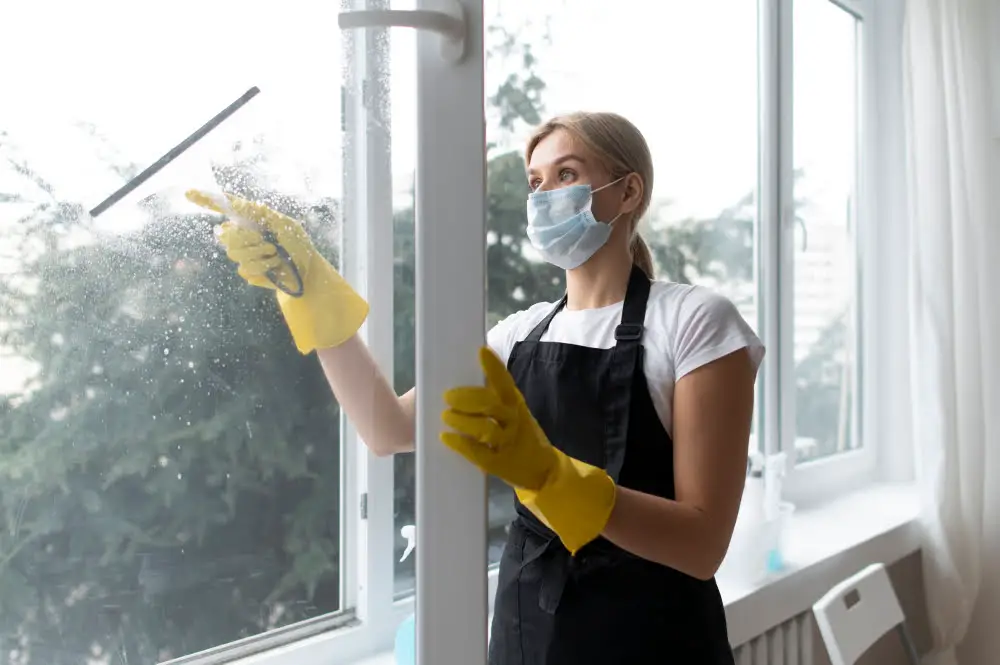
First and foremost is the size of the home and number of windows that need cleaning. A larger home with more windows will naturally require more time and effort, so you’ll want to factor this into your pricing model.
Another consideration is whether or not the homeowner wants additional services such as screen cleaning or track wiping. These extra tasks can add value but also take up more time, so be sure to price them accordingly.
It’s also important to keep in mind that many homeowners prefer regular service on a set schedule (such as monthly or quarterly), which can help ensure repeat business for your company while providing convenience for clients.
Commercial Pricing

Commercial buildings often have larger windows, higher floors, and require specialized equipment to access them safely. The frequency of service may vary depending on the type of business and its needs.
When determining your pricing strategy for commercial clients, it’s important to consider all these factors carefully. You’ll need to factor in not only the size and accessibility of each building but also how frequently you’ll need to provide service.
One common approach is charging per square foot or linear foot based on window size or length. However, some businesses may prefer a flat rate that includes regular maintenance visits throughout the year.
It’s essential always to communicate clearly with your clients about what they can expect from your services and how much they will cost upfront so that there are no surprises down the line.
Seasonal Discounts

During the slow season, you can offer discounted rates to encourage clients to book your services. For example, during the winter months when business tends to be slower, offering a discount on window cleaning services can help keep your schedule full.
On the other hand, during peak seasons such as spring or summer when demand for window cleaning is high, you may not need to offer any discounts at all. However, if you want to incentivize repeat business from loyal customers or referrals from satisfied clients during these busy times of year – consider offering loyalty rewards programs that provide incentives like free cleanings after every 10 paid visits.
Remember that while seasonal discounts are an excellent marketing tool for attracting new clients and retaining current ones – they should never compromise your profitability as a business owner.
Bundling Services
By offering multiple services at once, you can save time and resources while also making it easier for customers to get everything they need in one place. For example, if you offer window cleaning as well as gutter cleaning or pressure washing, consider bundling these services together for a discounted rate.
This not only incentivizes customers to choose your business over competitors but also helps ensure that all of their needs are met with just one appointment.
When bundling services, be sure to calculate the costs carefully so that you’re still earning a profit even with the discount offered. You may find that certain combinations of services work better than others depending on factors such as location and client demographics.
Pricing for Special Services

Special services can include anything from cleaning hard-to-reach windows or removing stubborn stains and marks on the glass. These types of jobs require extra time, effort, and often specialized equipment or cleaning solutions.
To price these types of jobs accurately, you’ll need to consider the additional costs involved in providing these services. This might mean factoring in the cost of renting specialized equipment or purchasing specific cleaning products that aren’t typically used for regular window cleanings.
It’s also important to communicate with your clients about any additional charges they may incur when requesting special services so that there are no surprises when it comes time for payment. By being transparent about your pricing structure upfront and explaining why certain tasks cost more than others, you can build trust with your clients while also ensuring that you’re earning what you deserve for your work.
Handling Negotiations

You want to make sure that you’re earning what you deserve for your hard work, but at the same time, you don’t want to scare off potential customers by charging too much. One of the best ways to handle negotiations is by being transparent about your pricing and explaining how it’s calculated.
Start by outlining all of the factors that go into determining your pricing strategy, such as window size and accessibility, level of dirt buildup or grime on windows, frequency of service needed (one-time vs. Regular), etc.
This will help clients understand why certain jobs may cost more than others.
Be open-minded during negotiations and willing to compromise if necessary while still ensuring profitability for yourself as a business owner. Consider offering discounts for referrals or bundling services together at a discounted rate.
Preparing Price Quotes

A well-prepared quote can help you win new business and build trust with existing clients. When preparing a price quote, be sure to include all of the services that will be provided as well as any additional fees or charges that may apply.
It’s also important to communicate clearly with your clients about what they can expect from your services. Be transparent about how long the job will take, what materials you’ll use, and any other relevant details.
When presenting your price quotes, consider using software tools like invoicing platforms or spreadsheets for accuracy and efficiency in tracking expenses. This way both parties have an accurate record of agreed-upon pricing terms which helps avoid misunderstandings down the line.
Communication With Clients

It’s essential to establish clear lines of communication from the outset, so your clients know what to expect and can provide feedback on your services. When discussing pricing with potential customers, be sure to explain how you arrived at the price point and what factors influenced it.
This transparency will help build trust between you and your client.
Once a job has been completed, follow up with the client to ensure their satisfaction. If there were any issues or concerns during the service call, address them promptly and professionally.
It’s also important to communicate effectively when scheduling appointments or providing estimates for new jobs. Be clear about availability windows and stick as closely as possible within those timeframes.
Consider using technology such as email or text messaging for quick updates on appointment times or changes in scheduling due to weather conditions that may affect outdoor work schedules.
Payment Terms
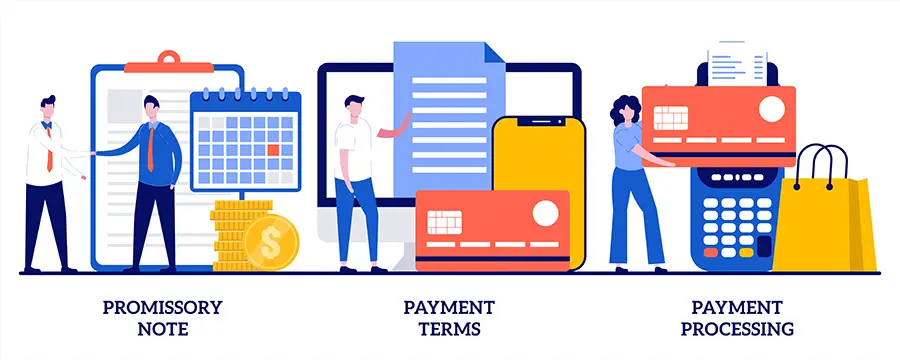
This will help avoid any confusion or misunderstandings down the line and ensure that you get paid on time for your services.
When setting payment terms, consider factors such as how long after completion of the job payments are due, whether deposits are required upfront, and what forms of payment you accept. It’s also a good idea to outline any late fees or penalties for missed payments in advance so that clients understand their obligations fully.
Communication is key when it comes to establishing payment terms. Be sure to discuss these details with each client before beginning work so that everyone is on the same page from the start.
By doing this, you’ll be able to build trust with your customers while also ensuring timely compensation for all of your hard work.
Determining how much to charge for window cleaning can be a complex process involving many different factors.
Contracts and Agreements

These documents outline the terms of your services, including pricing, payment schedules, service frequency, cancellation policies, and more.
Having a contract or agreement in place can help protect both you and your client by clearly defining expectations from the outset. It also helps to prevent misunderstandings or disputes down the line.
When creating contracts or agreements for your window cleaning business, be sure to include all relevant details about each job. This includes information about building size and accessibility (if applicable), types of windows being cleaned (e.g., single-pane vs double-pane), any special services requested by the client (such as gutter cleaning), as well as any seasonal discounts or promotions being offered.
By taking care to create thorough contracts that are tailored specifically to each job you take on – whether residential or commercial – you’ll be able to ensure that everyone involved is on the same page when it comes time for payment.
Upselling Services
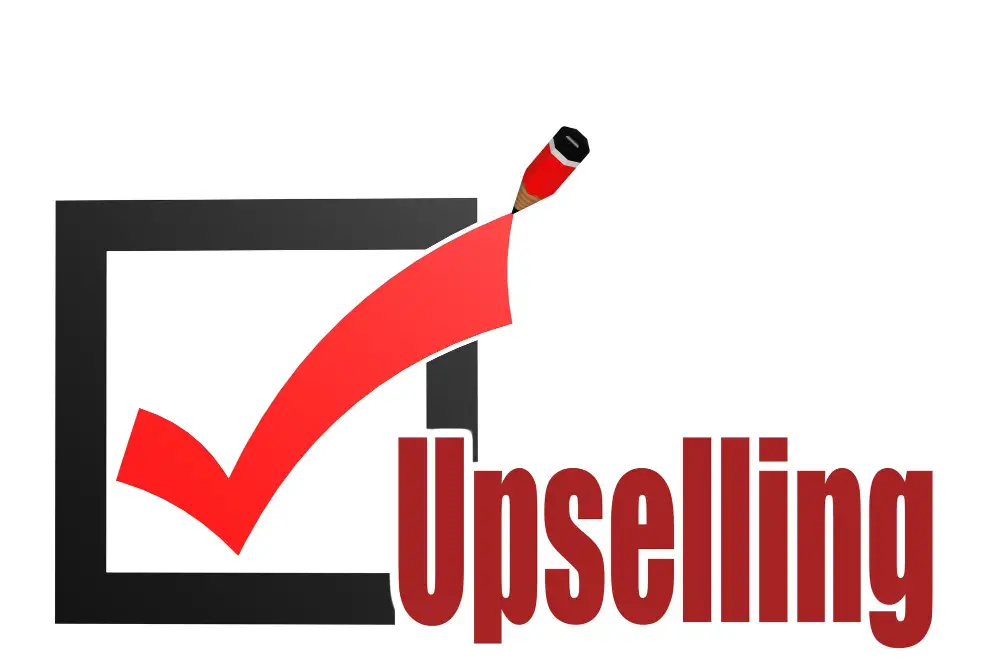
Upselling involves offering additional services or upgrades to your clients that complement their existing service package. For example, you could offer an exterior window cleaning service in addition to interior cleaning, or suggest adding on gutter and downspout cleaning.
When done correctly, upselling can be a win-win situation for both you and your client. Your client gets more comprehensive service while you earn more money for providing it.
To effectively upsell services, make sure that the additional offerings are relevant and valuable to the customer’s needs. You should also ensure that they understand how these extra services will benefit them in terms of maintaining their property’s appearance and value over time.
Tracking Expenses

This includes everything from equipment and supplies to transportation costs, insurance, and advertising expenses. By tracking these costs carefully, you can ensure that you’re pricing your services appropriately so that you’re earning enough to cover all your overheads while still making a profit.
To keep track of expenses effectively, it’s essential to use accounting software or spreadsheets where every expense is recorded accurately. You should also categorize each expense for easy reference when calculating profits at the end of each month or year.
By monitoring your expenditures closely and regularly reviewing them against revenue generated by sales in different seasons or locations over time will help identify areas where cost-cutting measures may be necessary without compromising quality service delivery standards.
Tracking expenses helps maintain profitability in any business venture; therefore it’s crucial for window cleaners who want their businesses to thrive long-term!
FAQ
How do you quote washing windows?
To quote washing windows, calculate the cost using the average price per pane, which ranges from $2-$7 per pane for residences and $2-$8 per pane for commercial properties.
How much would you charge to wash every window?
The charge to wash every window would range from $150 to $350, with most homeowners spending approximately $250 for a full house cleaning, and individual window prices ranging from $10 to $15 per window or $4 to $8 per pane.
How many houses can a window cleaner clean in a day?
A window cleaner can clean approximately 15-20 houses per day, considering factors like property size, number of windows, and distance between jobs, based on an average 3-bedroom property in the UK.
What factors should be considered when determining the pricing for window cleaning services?
Factors to consider when determining pricing for window cleaning services include the size and type of windows, location, accessibility, frequency of cleaning, and any additional services required.
How does the size and complexity of a window affect the overall cost to clean it?
The size and complexity of a window directly influence the overall cost to clean it, as larger and more intricate windows require more time, effort, and resources to clean effectively.
Are there any discounts or special offers available for regular window cleaning customers?
Yes, there are discounts and special offers available for regular window cleaning customers.
Related Stories
- How Much Do Window Cleaners Make?
- How to Start a Window Cleaning Business
- Do You Tip Window Washers?
- Do You Tip Window Installers
- Window Washer Salary: Uncovering How Much They Earn
Recap
